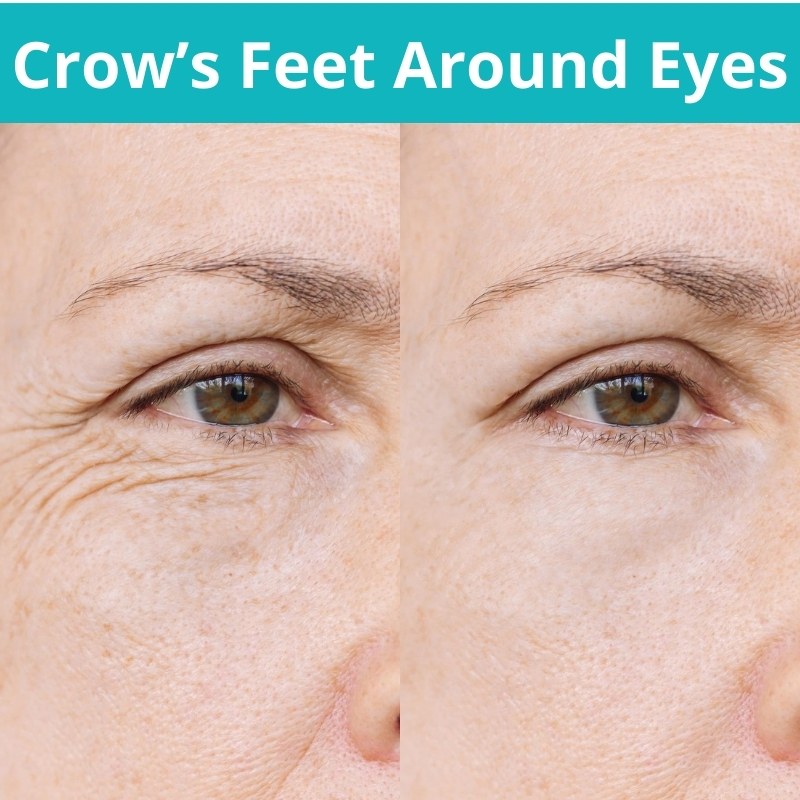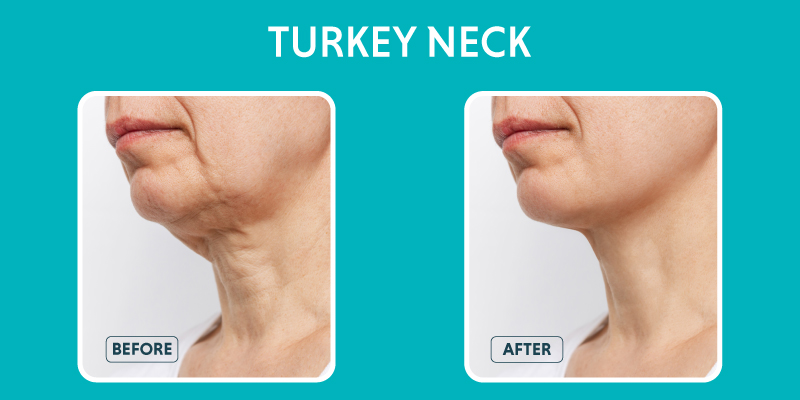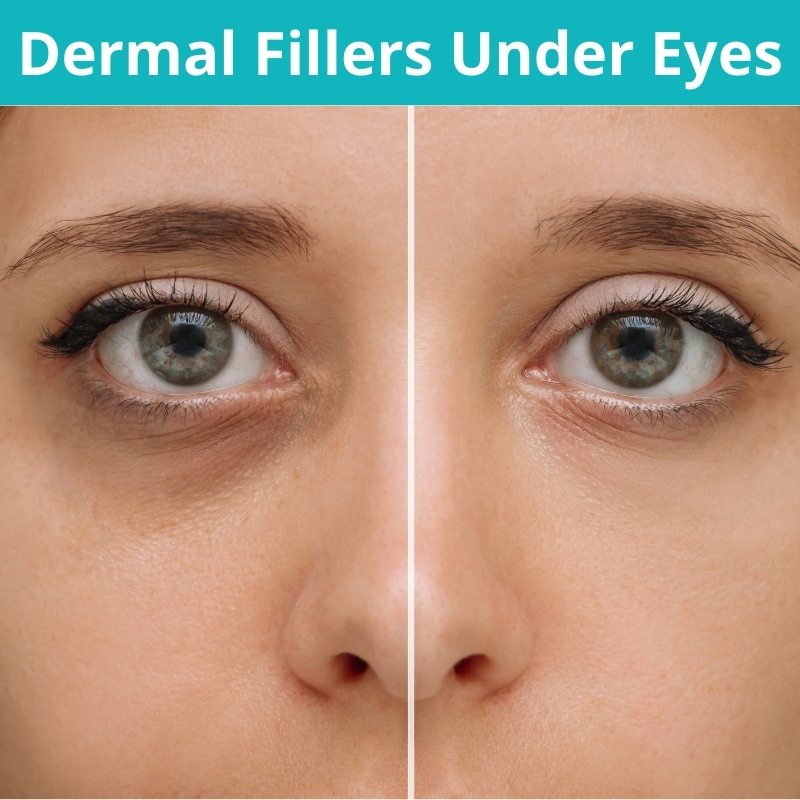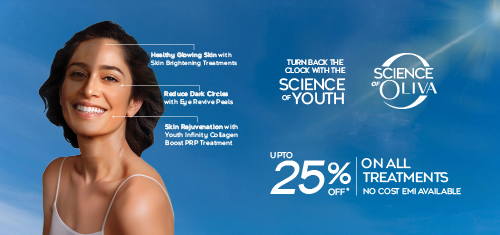In This Article
Facial Volume Loss: Causes & Treatments
Facial volume loss can make your face appear aged, dull, and frail. As a person ages, the fat pockets responsible for enhancing facial features like cheeks, forehead, and areas around the eyes and mouth droop, resulting in saggy and loose skin. Advanced facial volume loss treatments help people reduce these signs. Let us talk about facial volume loss and various treatments available to solve the problem.
In This Article

What Is Facial Volume?
Facial volume means the volume or fullness that gives your face structure, shape, and firmness. Your face consists of fat pads. Facial volume is determined by how appropriately and evenly the fat pads are distributed to give your face the perfect shape.
Causes Of Facial Volume Loss
- Natural Ageing: Moreover, there is no escaping the sun . It causes the skin to look aged.
- Smoking: Smoking regularly depletes oestrogen, restricts blood flow, and damages elastin fibres, affecting your facial volume.
- Hormonal Imbalance: Oestrogen is the predominant female hormone responsible for the amount of fat on the face and body. As the oestrogen hormone declines with age, the fat becomes less dense, which results in the sagging of facial skin.
- Weight Loss: Adopting extreme weight loss methods might cause your body to lose the small amount of good fat required to maintain the health and quality of your skin.
- Extreme Dieting: Dieting sometimes leads to deficiencies. If you follow an unmonitored extreme diet, it might strip your body of essential nutrients responsible for the health and elasticity of your skin.
- Bone Density Loss: Thinning bones can affect the fundamental support structure of the face, resulting in sagging skin and loss of facial volume.
- Chronic Stress: Chronic stress can lead to free radical damage, which accelerates the signs of ageing. It can also deplete collagen and elastin, speeding up facial volume loss.
- Collagen Production Decline: Collagen is like the elixir of youth. It is responsible for your skin’s elasticity, suppleness, and health. With age, collagen production declines, resulting in the loss of facial volume.
- Extreme Exercising: Vigorous exercise can cause your body to lose even healthy fat and losing fat can result in facial volume loss.
- Genetics: You might be predisposed to facial volume loss due to genetically driven hormonal imbalance, collagen depletion, or bone density loss.
- Injury In Humans: Sometimes, an injury might leave a lasting impact and damage the soft tissues and fat pads in the face, leading to loss of volume.
- Environmental Factors: Environmental issues such as pollution and dangerous UV rays can lead to collagen breakdown in the facial skin and result in loss of facial volume.
- Medical Conditions: Certain medical conditions such as rheumatoid arthritis, lupus, immune system disorders, viral infections, and thyroid might damage facial fat and lead to loss of facial volume.
- Poor Diet: If your diet lacks plant protein, omega-3 fatty acids, calcium, and vitamin C, it might negatively impact collagen levels and bone health, both of which are important to maintain facial volume.
Common Areas Of Volume Loss
Certain areas of the face specifically experience volume loss, making you appear aged.
- Cheeks: The bones in the face might change shape, and the fat pads in the cheeks might shrink and move downwards, causing them to appear concave and flat.
- Lips: Due to the ageing process, lips tend to lose shape, fullness, and definition.
- Under eyes: The area under your eyes might lose firmness and volume due to thinning skin and loss of elasticity. As a result, your eyes might appear sunken, making you look frail and old.
- Temples: The soft tissue thickness in the temple region decreases with age. As a result, your temples might appear small.
- Jawline: The jawline is the most prominent feature that defines the face. As we age, the face bones become weak, and the skin loses elasticity, causing the jawline to appear droopy.
- Forehead: Your forehead is the first place you see wrinkles and fine lines. Collagen and elastin depletion cause the forehead skin to develop creases.
- Glabella: The area between the eyebrows develops permanent fine lines as the skin ages and loses suppleness.
- Around The Mouth : The area around the mouth develops marionette lines with age. Marionette lines are the creases that extend from the corners of your mouth to the chin.
- Periorbital: The area around the eyes develops wrinkles called crow’s feet and under-eye bags. These are often the first warning signs of skin ageing.
Non-Surgical Treatment Options For Facial Volume Loss
- Dermal Fillers: Dermal fillers contain hyaluronic acid, which enriches the skin with moisture and provides cushion and lubrication against damage. They come in smooth gel injectables, which promise to restore the lost volume on your face. Dermal fillers work best against nasolabial folds and marionette lines. [1]
- High-Intensity Focused Ultrasound (HIFU): HIFU uses ultrasound techniques to create heat in the deeper layers of the skin. This heat damages targeted skin cells, causing the body to produce more collagen to enable cell regrowth. This enhanced production of collagen helps in improving skin texture and elasticity. HIFU significantly helps tighten the skin on the neck, soothe wrinkles on the face, and lift droopy eyelids. [2]
- Botox: Botulinum Toxin injections are used to defy skin ageing by relaxing certain facial muscles that cause wrinkles. In simple terms, botox prevents certain muscles from moving, thus repairing wrinkles, forehead creases, frown lines, and crow’s feet.
- Chemical Peels: This is a simple technique in which a chemical solution removes the top layer of the skin, stimulating new skin growth and reducing the appearance of wrinkles, acne, blemishes, and other skin imperfections.
- Radiofrequency Microneedling (RF): Radiofrequency microneedling works on the combined power of radio frequency and microneedling to encourage the body to produce more collagen. It best eliminates wrinkles, fine lines, acne scars, and large pores.
- Laser Skin Resurfacing: Ablative laser treatment removes the outer layer of the skin to reveal fresh skin. Non-ablative laser treatment stimulates collagen in the skin without removing the top layer.
- Topical Solutions: Topical solutions are what you directly apply to your skin. These can be gels, creams, or serums. Using products with the goodness of hyaluronic acid, retinoids, and peptides can significantly improve your skin’s texture and elasticity.
Benefits Of Non-Surgical Facial Volume Loss Treatment
- Minimal Downtime: Since these are non-invasive procedures, the recovery time is minimal.
- Natural And Bespoke Results: These treatments rejuvenate your skin naturally and you can choose the procedure depending on the type of results you want.
- Fast Procedure: These treatments are quick and do not require any hospital stay or recovery period after the procedure.
- Immediate And Long-Lasting Results: The results show very soon after the treatment. The effect is long-lasting and only improves over time.
- Corrects Facial Asymmetry: The treatments help you achieve facial symmetry without causing any damage to the skin.
- Reduction Of Wrinkles: These treatments help reduce wrinkles by stimulating the production of collagen and elastin.
- Youthful Appearance: These treatments help get rid of damaged skin giving you a youthful appearance.
- Enhanced Facial Contours: Treatments like dermal fillers help enhance certain features of the face, giving a contoured look.
- Fewer Risks Are Involved: The non-invasive nature of these science-backed treatments help slow down ageing with minimal chances of side effects or risks.
- Add Volume To Saggy Skin: These treatments boost the collagen and elastin production, which transform saggy or loose skin.
- Customisable Treatments: There are a wide range of solutions you can choose from based on your unique needs.
- Enhanced Facial Features: These treatments help redefine your jawline, cheeks, neck, lips, and eyes.
- No Incisions: You can expect fabulous results without going through any complex procedure that requires an incision in your body.
Surgical Options For Facial Volume Loss Treatment
- Facelift: A facelift, a common name for rhytidectomy, is a surgical procedure that removes excess facial fat, tightens face muscles, and restructures facial skin. It is performed on the lower two-thirds of the face and is best for wrinkles, creases, and sagging skin.
- Fat Grafting: Fat grafting is a technique that involves extracting available fatty tissues from a section of your body using liposuction. These harvested fat tissues are then processed and distributed into tiny syringes to be injected into areas of the face that require volume replenishment.
- Face Implants: Facial implants are tailor-made medical silicone implants meant to enhance or augment features such as the chin, cheek, jaw, lips, etc. Face implants can also be made of polythene, Gore-tex, and hydroxyapatite.
Reasons You Should Consider Dermal Fillers
Dermal fillers are one of the safest non-surgical treatments that help recover facial volume. They provide subtle, natural, long-lasting, and cost-effective solutions for wrinkles, fine lines, and sagging skin without side effects. [3]
Who Are Good Candidates For Dermal Fillers?
- An individual who is physically and mentally fit.
- An individual with realistic expectations to reverse skin ageing.
- An individual who is a non-smoker and limits alcohol intake
- An individual not currently breastfeeding or going through pregnancy.
Tips For Maintaining Facial Volume
- Ensure your diet includes antioxidants, vitamins C, calcium, and protein-rich
- Exercise regularly to keep your body active and metabolism in check.
- Limit exposure to the sun, as UV rays are a major factor for skin ageing.
- Follow a strict skincare routine
- Limit smoking and intake of alcohol as these substances accelerate the signs of ageing.
- Prioritise hydration as water nourishes the skin.
- Get adequate sleep and maintain a sleep routine.
- Do regular facial workouts that keep your features in shape and intact.
- Use face products that promise to boost collagen production and increase your intake of collagen-boosting foods like bone broth, fish, leafy greens, eggs, and chicken.
Frequently Asked Questions On Facial Volume Loss
There can be several causes, such as sun exposure, stress, diet imbalance, hormonal imbalance, hereditary issues, dramatic weight loss, etc.
It is impossible to reverse facial volume loss completely, but you can marginally recover it with various surgical and non-surgical techniques.
Maintain a healthy lifestyle, monitor diet, practice stress reduction techniques, exercise regularly, limit sun exposure, and follow proper skincare routine.
Dermal fillers might cause temporary bruising, swelling, redness, itching, skin infection, or bumps under your skin.
It depends on the type of procedure. Generally, all procedures start showing results within 6 months of treatment.
You can consult an experienced dermatologist about this.
There is no guarantee that the treatments will last forever, but surgical treatments tend to last longer.
Non-surgical treatments need to be taken once in 2-3 years. Surgical treatments can last many years.
Yes, there are EMI options for facial volume loss treatments. Consult your bank about the same.
Treatments range from surgical to non-surgical. You can opt for dermal fillers, chemical peels, botox, etc., or you can choose surgical options such as facelifts, face implants, and fat grafting.
Several causes may be involved, such as, natural skin ageing, stress, sun damage, collagen depletion, strict dieting, or vigorous exercise.
Read This Next

9 Best Anti Aging Treatments In India For Youthful Skin – Blog

Crow’s Feet Around Eyes: Treatments, Home Remedies & Prevention

Turkey Neck: Exercises, Treatments & Surgeries to Get Rid of It

Dermal Fillers Under Eyes: Cost, Benefits, Results & Procedure

Non-Surgical Double Chin Treatment: Benefits, Cost And Results



